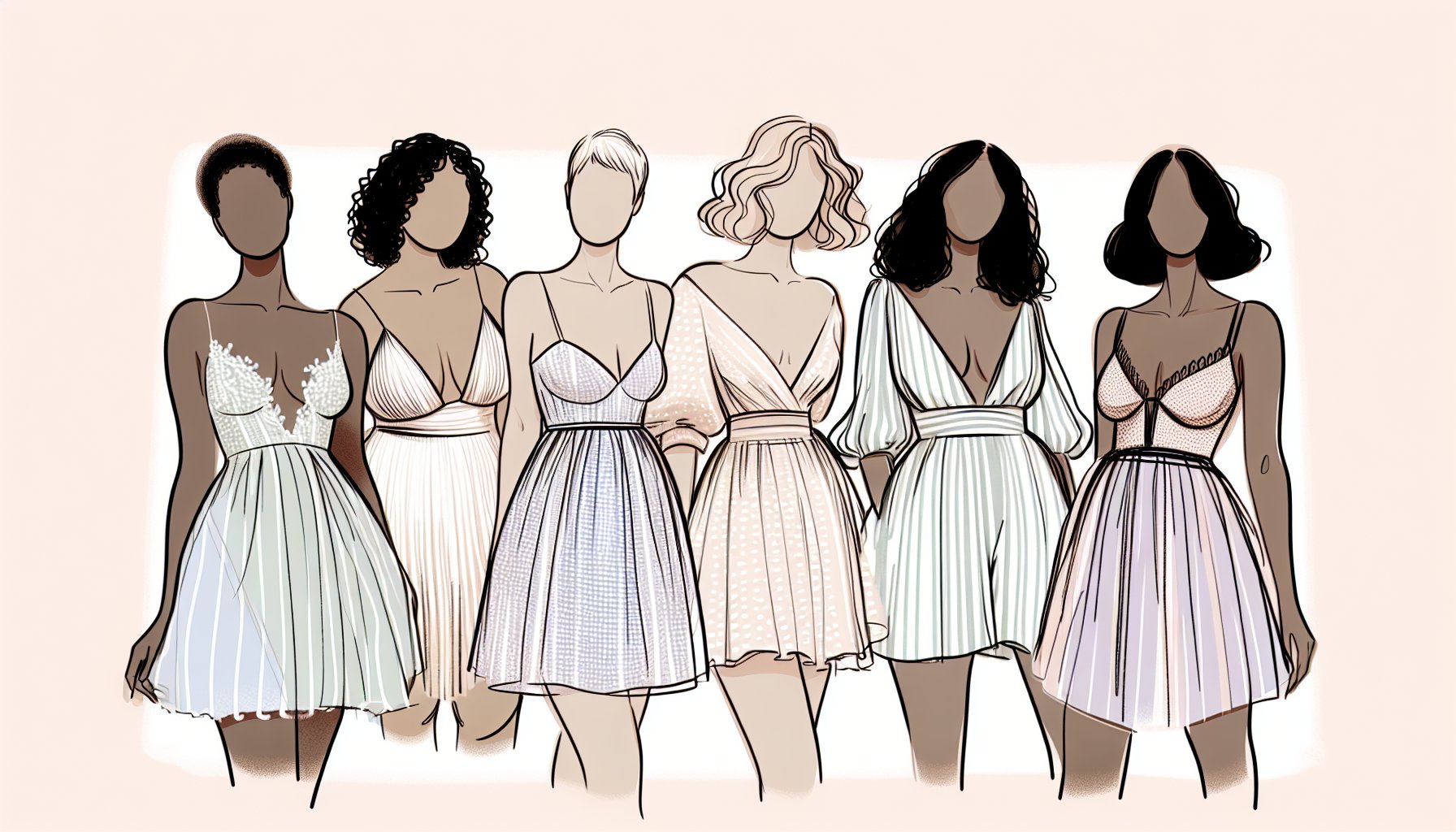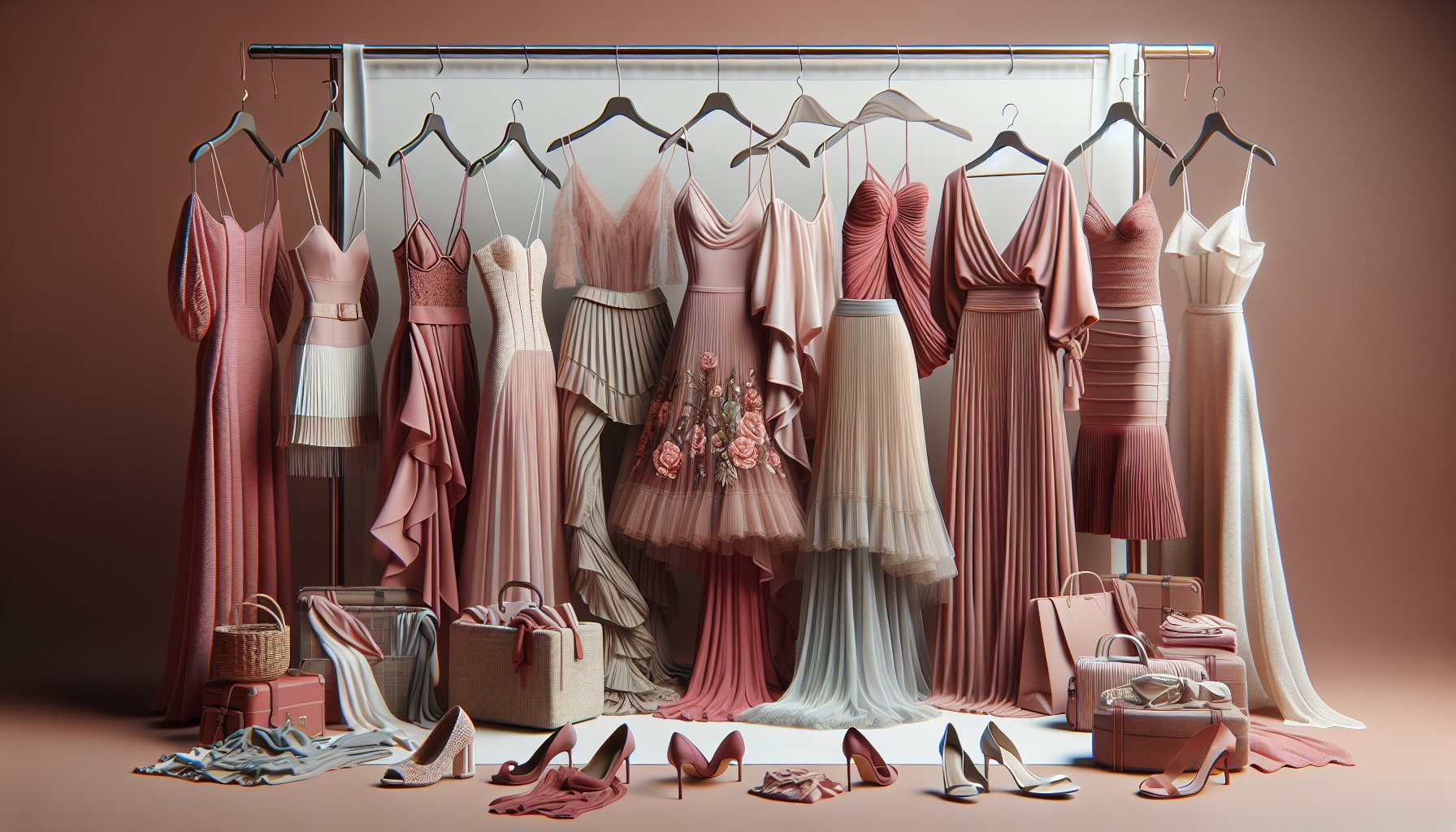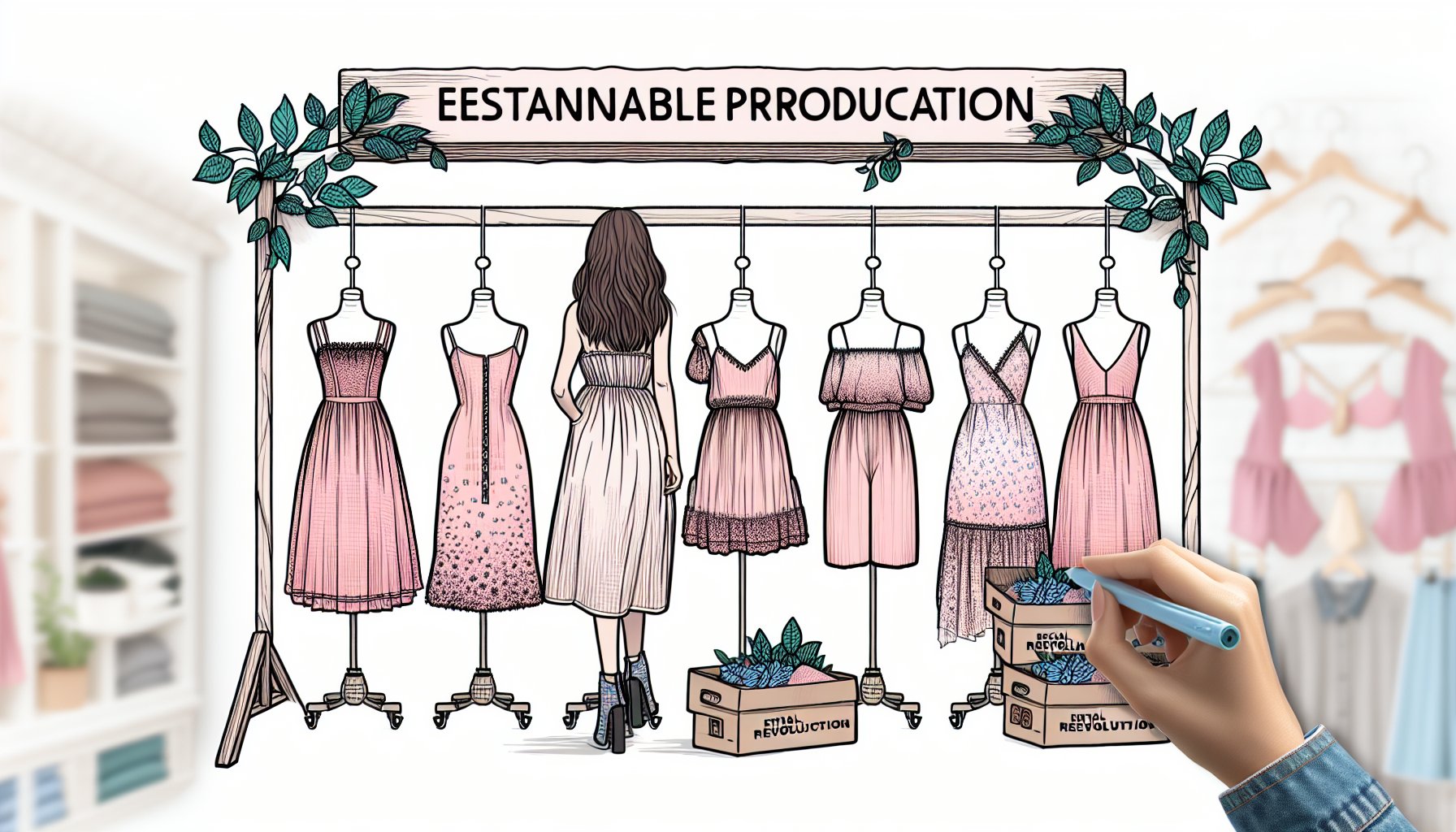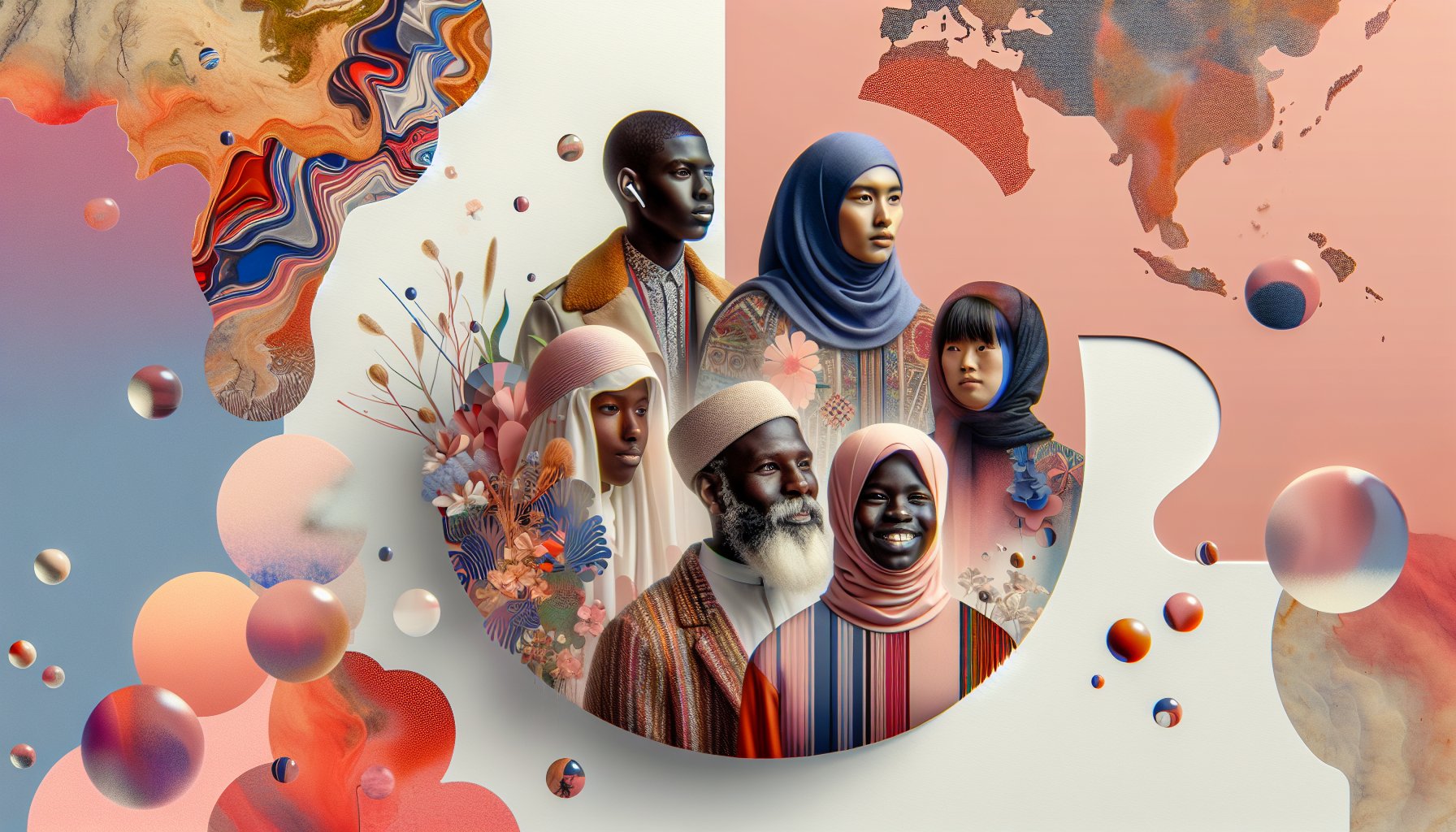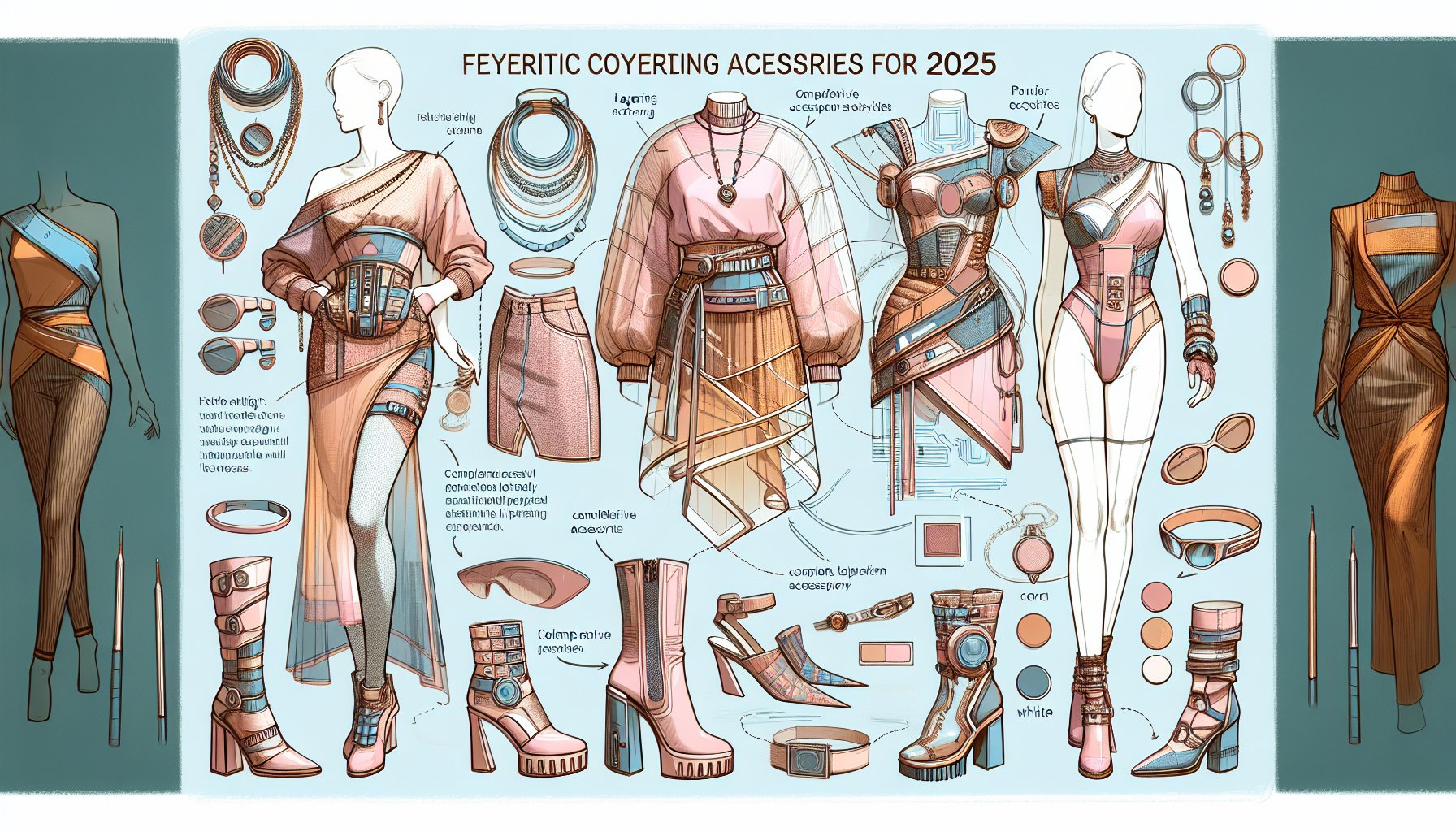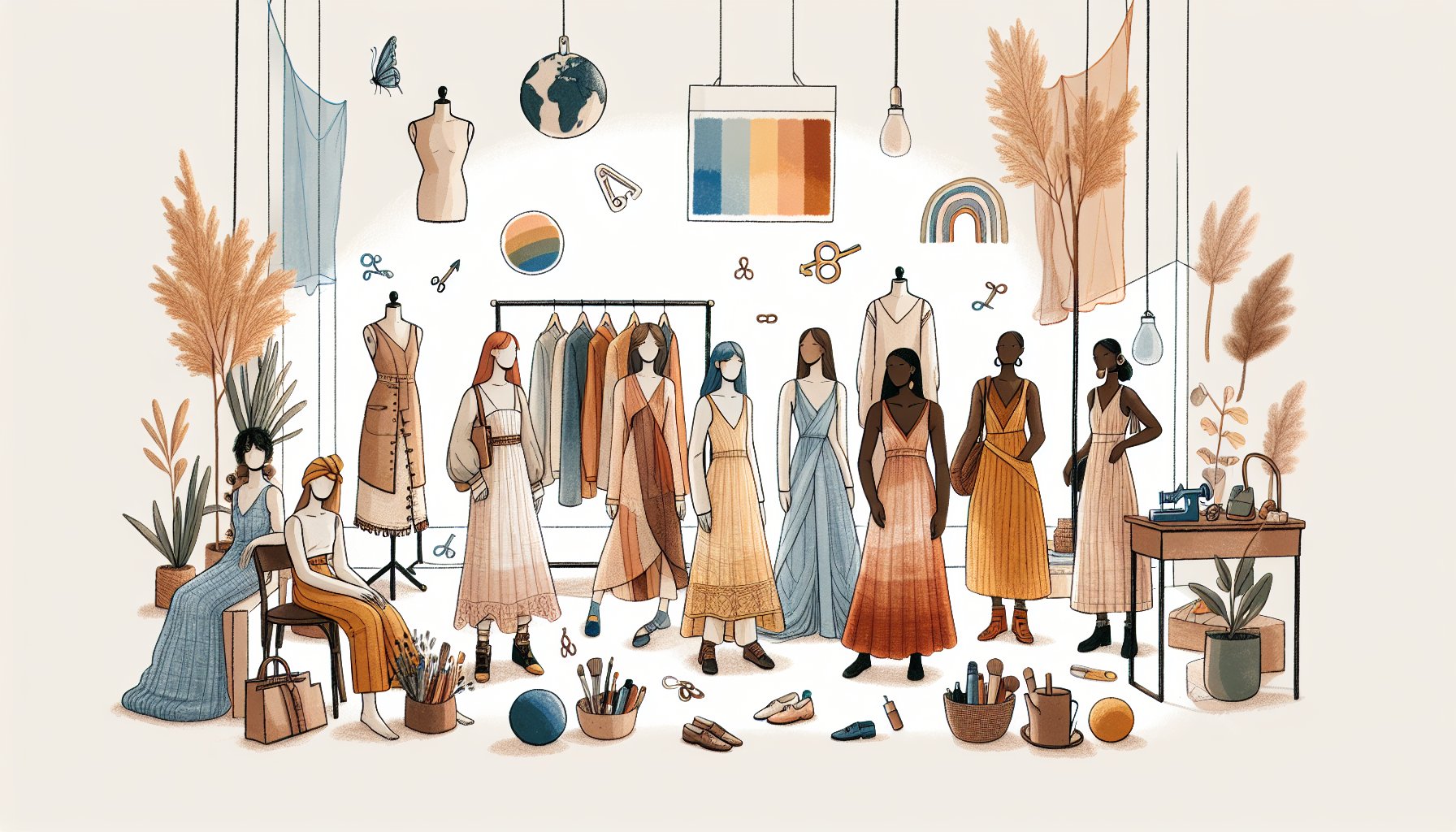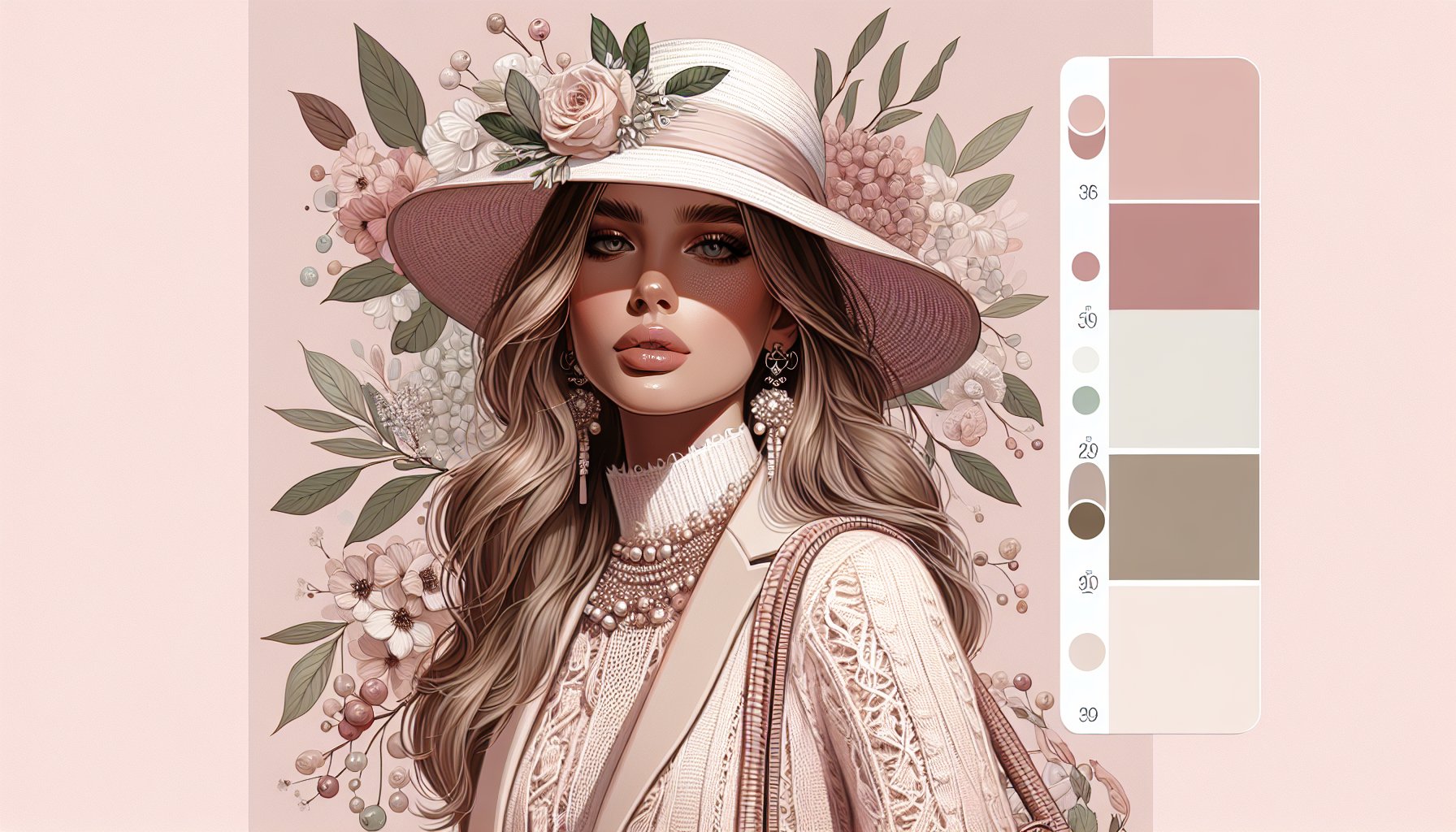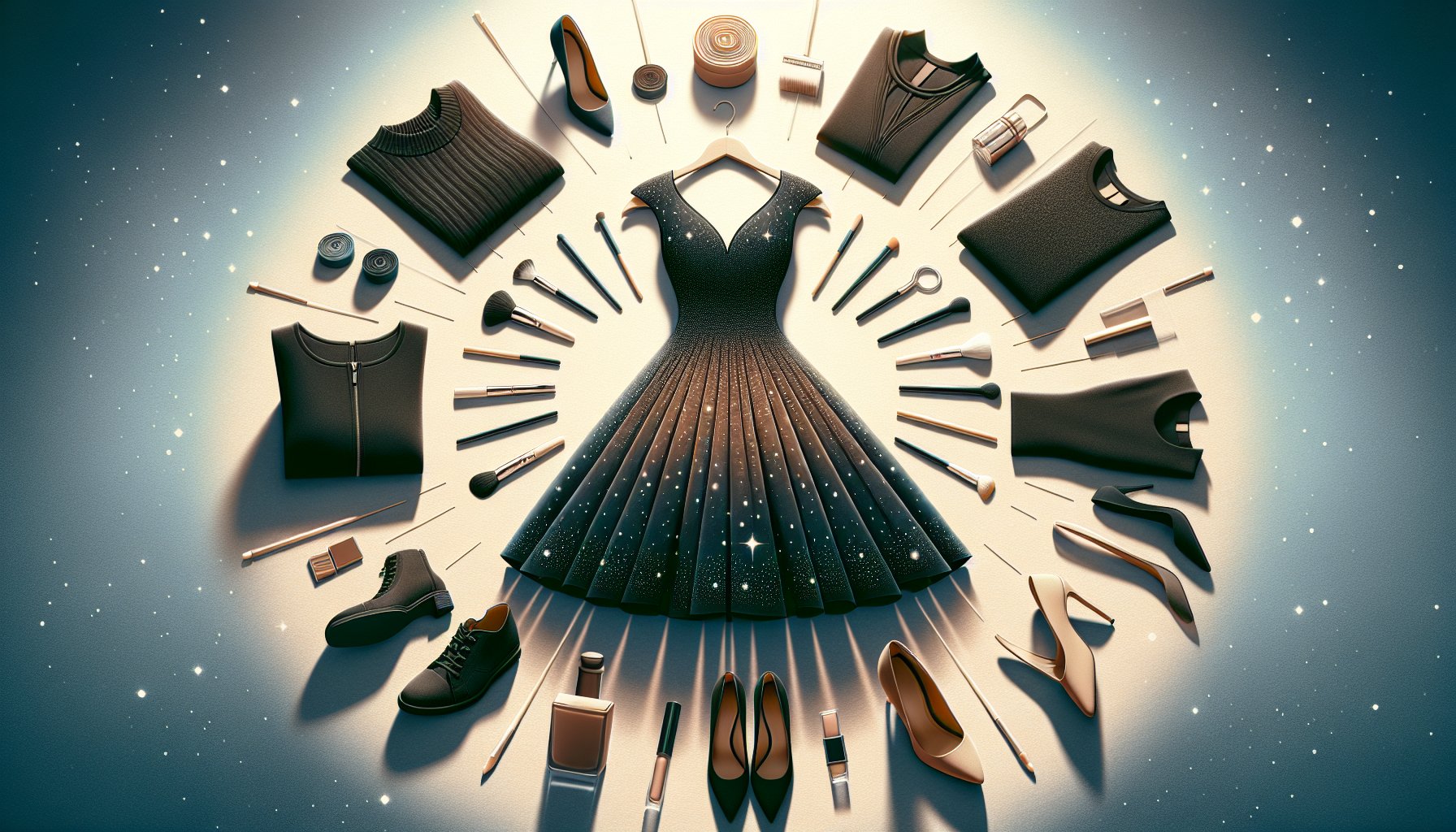Dresses
Analyzing the 2025 Dress Market: Key Trends and Consumer Preferences
Discover the transformative trends shaping the 2025 dress market. From sustainable fabrics to digital personalization, learn how consumer preferences are redefining fashion's future. Explore the intersection of style, ethics, and technology in this insightful analysis.
Oct 04, 2025
9 min read
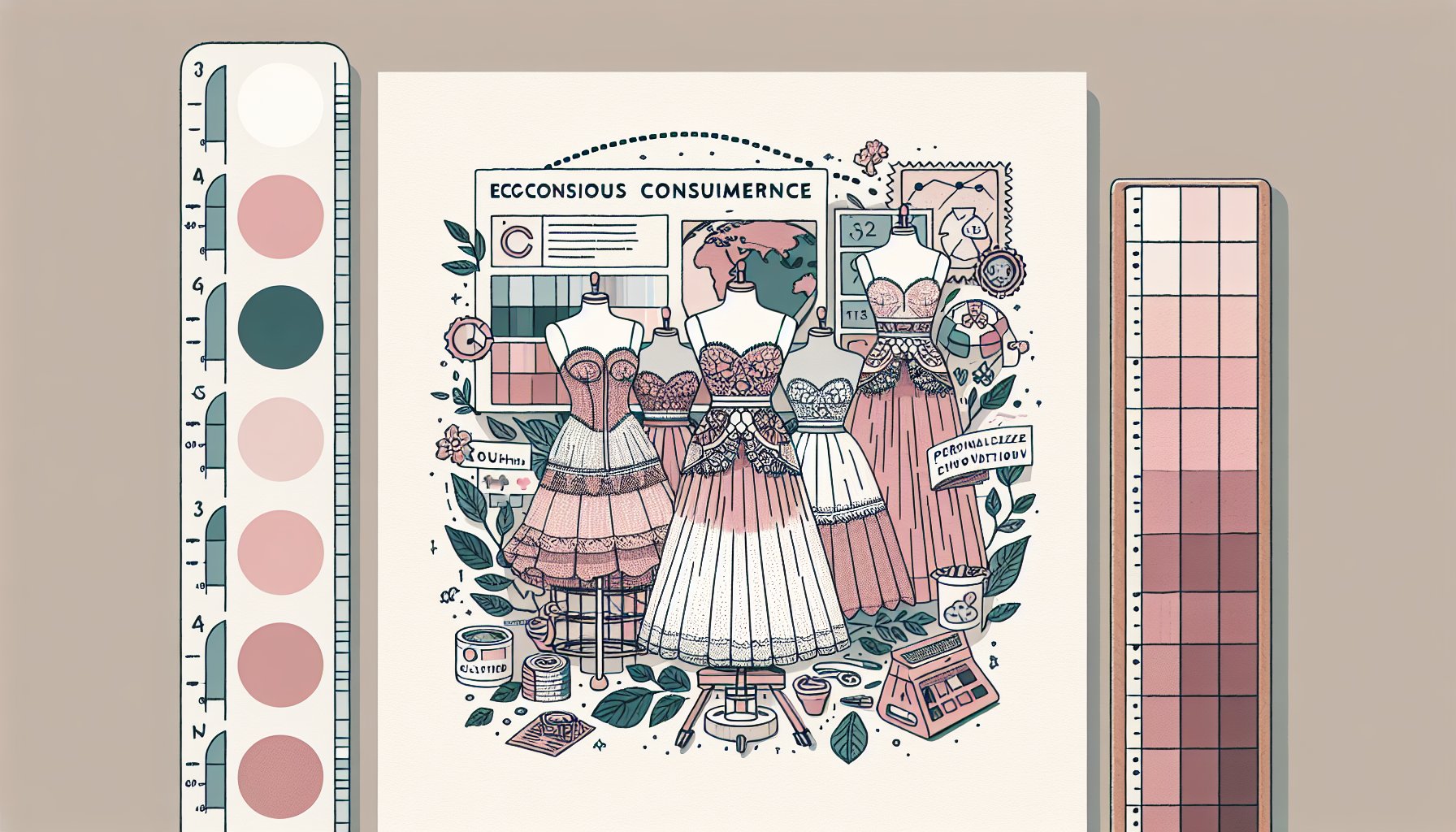
Analyzing the 2025 Dress Market: Key Trends and Consumer Preferences
Fabric of Tomorrow: The New Textiles Revolution
Picture this: a vibrant tapestry meticulously crafted from innovation, sustainability, and shifting consumer demands. Welcome to the fabric of 2025, a revolution that’s reshaping the fashion industry from the inside out. No longer can we rely on the outdated comfort of polyester and its synthetic ilk, responsible for a hefty share of carbon emissions and an unwanted legacy in ecosystems. Instead, forward-thinking companies like Espace Cannelle are sliding into the vanguard, choosing organic and recycled materials, like Tencel and repurposed plastics, to weave the garments of tomorrow.
Enter biofabrication and 3D printing, technologies that promise garments grown from mycelium and leather spun from plants. Espace Cannelle, among other visionary brands, may soon be less a fashion house and more a futuristic lab operating a circular economy. The mantra? Create, use, transform, repeat.
As sustainability weaves its way into the consumer consciousness, transparency becomes non-negotiable. Gen Z and eco-warriors demand traces of origin alongside style, evident in the soaring popularity of second-hand platforms like ThredUp and Depop. What we wear is fast becoming a statement of our values as much as our style.
Looking ahead, tech will continue to jostle for the spotlight. AI promises to tailor not just suits but experiences while refining production processes to a fine art. Brands that tap into this technological symbiosis while staying true to ethical production are likely to set the gold standard for the industry. The fabric of tomorrow is more than materials; it’s a movement.
Silhouettes of Style: Trends That Turn Heads
In the whirlwind world of 2025 fashion, silhouettes are not just about the curve of a dress. They are visual essays on sustainability, technology, and our collective conscience. Fast fashion’s meteoric rise, fueled by brands like Shein feeding the endless appetite for novelty, is being re-evaluated. As consumers become savvier, the challenge is to craft silhouettes that don't just look good but feel right, ethically speaking.
Enter eco-conscious designs, flaunting recycled fabrics as well as styles birthed from sustainably sourced materials. These aren’t just clothes, they’re a loud, clear statement that transparency is in vogue. Add to this mix the almighty algorithm, and you have a new kind of trendsetter. Influencers, wielding their social media might, can elevate a style virtually overnight, propelling fashion into an era where adaptability rules.
According to Dr. Sarah Ellis of NYU, "In 2025, the industry must grapple with how to create aspirational silhouettes that resonate with a more ethical, value-driven consumer." Adaptable sizing and modular designs are leading the charge, ensuring that fashion not only flatters but also respects the wearer.
Color Chronicles: The Palette of Preference
As fashion waltzes into 2025, color emerges not merely as eye candy but as a storyteller, setting the emotional stage for an era marked by resilience and optimism. Amid global unrest and environmental worries, consumers gravitate towards hues that echo hope, bold yellows, electric blues, and warm earth tones dominate.
Platforms like Instagram and TikTok have turned into digital catwalks, where hue trends pick up steam faster than you can say "Viva Magenta", Pantone's Color of the Year, 2023, which struck a chord of empowerment and resilience. As consumers clamor for this chromatic optimism, brands scramble to add these shades to their collections.
Simultaneously, there's a shift towards organic dyes and natural palettes as eco-conscious consumers look to their wardrobe as an extension of their values. Sapient industry watchers like Dr. Patricia F. Miller underscore the emotional heft of color, where chosen hues reflect and respond to our inner worlds. For brands, the challenge lies in balancing color trends with sustainable practices, a dance that promises to be as colorful as it is responsible.
Social Influence: The Role of Digital Savvy in Dress Choices
Welcome to 2025, where social media isn't just a communication tool but the pulse of the fashion world. Here, influencers and everyday users alike wield the power to dictate trends. The "ultra-fast fashion" machine, epitomized by brands like Shein, rides this wave, using user-generated content to bring new designs to market within days. This immediacy caters to a consumer penchant for quick, relevant style.
But with great power comes great responsibility. As awareness around sustainability grows, consumers demand transparency. According to McKinsey, 67% of consumers now prioritize sustainable materials. The challenge? Navigating this digital world while maintaining ethical practices.
Moreover, data analytics and AI are now couture's unseen loom, predicting trends before the first stitch is even sewn. The risk is overproduction, the nemesis of sustainability. But some, like Heuritech, harness AI to not just forecast but also to promote responsible production. The fashion forward will be those who practice digital savvy with a conscience.
Personalization to the Max
In 2025, the fashion industry has a new muse: personalization. No longer a niche, this trend has infiltrated everything from rack offerings to retail experiences. Brands like Espace Cannelle lead the way with customizable options that let consumers design down to the stitch. Personalization is now not just an option; it’s a relationship builder.
Technology, specifically 3D design tools and augmented reality, adds a digital sheen to customization. Consumers can visualize their dream garment before it even exists, minimizing returns and enhancing confidence. The challenge? Balancing this bespoke approach with sustainability, as the environmental implications of made-to-order clothing become clearer.
As consumer insight guru notes, "Brands that invest in understanding their customers will not only thrive but reshape the future of fashion." The charge is clear: personalization is the future. The question is, are you in?
Sustainable Chic: Eco-Conscious Consumerism on the Rise
Fast forward to 2025, and sustainable chic isn't just a buzzword, it's a movement. Espace Cannelle exemplifies this trend, proving that style and sustainability can coalesce beautifully. Consumers, acutely aware of fast fashion's environmental toll, are demanding accountability. In response, eco-friendly has become the new avant-garde.
Social media has amplified this shift, with hashtags like #SustainableFashion ringing up millions of hits. Yet, fast fashion's economic appeal lingers, with 75% of consumers gravitating towards cheaper options in challenging times. Still, brands like Espace Cannelle make a compelling case for eco-chic, showing that sustainable practices can coexist with style.
Anna Wintour aptly puts it, "Fashion is about the present moment, but it is crucial we consider its impact on the future." For the industry, the message is clear: ignore sustainability at your peril.
Occasions Reimagined: The Dress for Every Moment
In 2025, dressing is a fluid art form, reflecting everything from cultural shifts to technological leaps. Consumers are no longer compartmentalizing their wardrobes but seeking versatility in every outfit. Brands like Espace Cannelle are at the forefront, crafting pieces that defy categorization, effortlessly transitioning from coffee meetings to evening galas.
Social media has fueled this shift, with influencers proving that a single dress can become a fashion chameleon. Capsule wardrobes, sustainability’s fashionable cousin, resonate with consumers looking for timeless, versatile pieces. The dress is more than an outfit, it's a canvas for expression.
The Future Market
Looking ahead to 2025, the future of the dress market is a delicate dance between fast fashion's growth and a shift towards sustainable practices. Fast fashion is projected to balloon, but so too is the backlash against its environmental toll. Ultra-fast fashion exemplifies this tension, marrying immediacy with unsustainable consumption cycles.
Yet, second-hand and upcycling are on the rise, resenting a compelling counter-narrative. Brands embracing technology for transparency and traceability find favor, but greenwashing remains a pitfall. Moving forward, authenticity is non-negotiable.
For trailblazers like Espace Cannelle, the future lies in aligning with these emerging values. The brands that can seamlessly bond sustainability with allure will not just survive, they’ll define the next era of fashion.
Cultural Influence: Global Flavors in Dress Design
Fashion in 2025 is a vibrant tapestry, with global cultures weaving into the design narrative. This fusion isn’t just a trend, it's a celebration of our interconnected world. From African prints to Japanese tailoring, these designs offer a compelling counter-narrative to fast fashion’s homogeneity.
Social media has democratized this cultural diffusion, empowering influencers to champion authenticity over appropriation. Brands, meanwhile, navigate the fine line between inspiration and exploitation, with genuine collaboration as their compass.
The cultural fusion isn’t just aesthetic, it's sustainable. By incorporating traditional crafting methods, designers can create garments that honor both heritage and the Earth. Embracing this richness, brands like Espace Cannelle are poised to lead a fashion revolution.
Building a Brand
In the ever-twisting maze of fashion, building a brand is no walk in the park. For Espace Cannelle, 2025 represents a crossroads where sustainability, ethics, and consumer preferences collide. With fast fashion hurtling towards USD 214.24 billion by 2029, Espace Cannelle has chosen a different path, one of transparency and quality, a rare blend in the micro-season mania.
By tapping into consumer psychology, the brand offers more than garments; it provides a narrative that resonates. Embracing AI-driven insights, they cater to a new breed of consumers who value integrity and style.
In a marketplace where fashion signifies values as much as aesthetics, Espace Cannelle embodies how to navigate and indeed thrive in this intricate labyrinth.
TLDR
The 2025 dress market is a dynamic interplay of sustainability, digital innovation, and consumer consciousness. Innovations in textiles, personalized experiences, and global cultural influences are reshaping how consumers and brands interact. Fast fashion's growth is countered by a rising demand for sustainable practices, with social media guiding trends and transparency becoming a necessity. As technology and ethics intertwine, the future of fashion is set to balance creativity with responsibility, leading to a more conscious industry.
Need Help?
Check out these related products that can help:

